Passengers 11 Registration N33701 Survivor 0 Crew count 3 | Survivors 0 Date 11 September 1991 Total fatalities 14 (all) Passenger count 11 | |
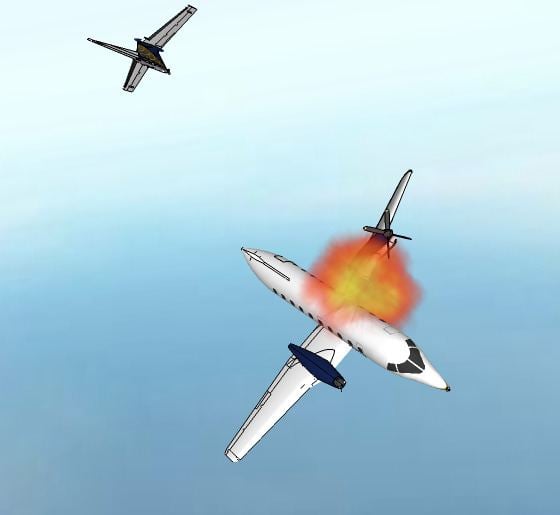 | ||
Summary In-flight structural failure due to improper maintenance Similar Nigeria Airways Flight 2120, Eastwind Airlines Flight 517, United Express Flight 5925, USAir Flight 1493, West Caribbean Airways F | ||
full air crash invstigation break up over texas continental express flight 2574 full
Continental Express Flight 2574 (Jetlink 2574) was a scheduled domestic passenger airline flight operated by Britt Airways from Laredo International Airport in Laredo, Texas, to Bush Intercontinental Airport (IAH) in Houston, Texas. On September 11, 1991, the Embraer EMB 120 Brasilia, registered N33701, crashed while the turboprop aircraft was en route to Houston, killing all 14 people on board. The aircraft wreckage hit an area near Eagle Lake, Texas which is located approximately 65 miles (105 km) west-southwest of IAH.
Contents
- full air crash invstigation break up over texas continental express flight 2574 full
- Aircraft and crew
- Incident
- Investigation
- Probable cause
- Role in developing the culture of safety
- Dramatization
- References

The media stated there was initial speculation that a bomb had destroyed the aircraft; however, the National Transportation Safety Board (NTSB) subsequently discovered that missing screws on the horizontal stabilizer led to the crash.
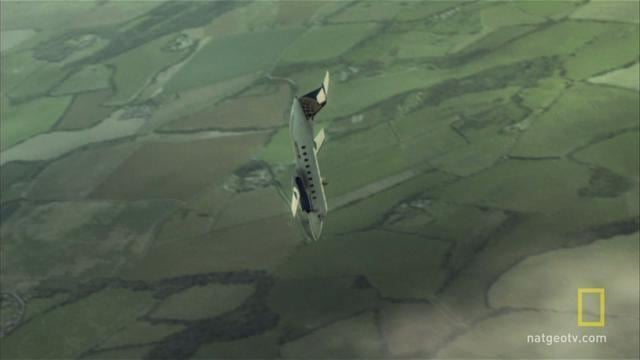
Aircraft and crew

The Embraer 120 Brasilia, serial number 120-L77, was built in 1988, three years before the accident, and had accumulated 7,229 flight hours through 10,009 cycles. The Federal Aviation Administration records stated that the aircraft had been sent to the maintenance hangar 33 times for unscheduled repairs.

The crew consisted of 29-year-old Brad Patridge of Kingwood, Texas (Greater Houston) as captain and 43-year-old Clint Rodosovich of Houston as the first officer. Both were experienced pilots with 4,243 flight hours and 11,543 flight hours, respectively.
Incident
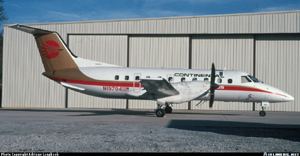
The EMB 120 departed Laredo International Airport at 09:09, operating under Federal Aviation Regulation Part 135 and after a normal takeoff was assigned a cruise altitude of flight level 250 (FL250), then reassigned to FL240. At 09:54 the flightcrew responded to the Houston Air Route Traffic Control Center, and started descending to nine thousand feet. At approximately 10:03 the while descending through 11,500 feet with an indicated airspeed of 260 knots the leading edge of the left horizontal stabilizer separated from the airframe, and the airplane pitched down dramatically, rolling around on an axis as the left wing folded. The escaping fuel from the wings ignited, and the pilots lost consciousness from the severe g-forces due to the major oscillations of the crippled aircraft. The wreckage fell in southeast Colorado County, Texas, exploding on impact, off Farm to Market Road 102, seven miles (11 km) southeast of Eagle Lake, Texas, and 60 miles (97 km) west of Downtown Houston. The Texas Department of Public Safety said rescue units discovered no survivors. The wreckage was spread over a 2- to 4-square-mile (10 km2) area; some pieces fell into the Colorado River. About $500,000 (1991 value; currently $900,000) worth of Diamonds were discovered in the wreckage; they had no role in the crash.
Investigation
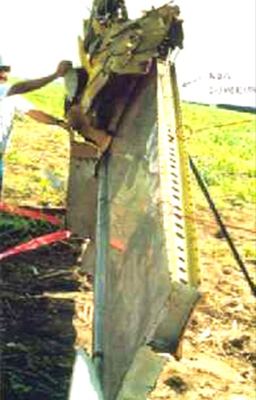
The National Transportation Safety Board (NTSB) investigation revealed that screws had been removed from the horizontal stabilizer during maintenance the night before the accident and, following a shift change, the screws had not been replaced. The plane crashed on its second flight of the day.

NTSB cited the failure of airline maintenance and inspection personnel to adhere to proper maintenance and quality assurance procedures. The failure of Federal Aviation Administration (FAA) surveillance to detect and verify compliance with approved procedures was cited as a contributing factor. Following the accident, the FAA conducted a National Aviation Safety Inspection Program (NASIP) of Continental Express' maintenance program. It found very few safety deficiencies, and complimented the airline on its internal evaluation system. NTSB expressed concern that the NASIP did not find deficiencies in shift turnover procedures and other matters relevant to the accident, and recommended that the agency improve its NASIP procedures.
Probable cause
The National Transportation Safety Board determines the probable cause(s) of this accident as follows:
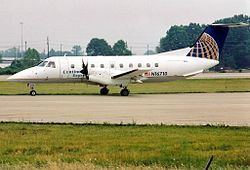
"The failure of Continental Express maintenance and inspection personnel to adhere to proper maintenance and quality assurance procedures for the airplane's horizontal stabilizer de-ice boots that led to the sudden in-flight loss of the partially secured left horizontal stabilizer leading edge and the immediate severe nose-down pitchover and breakup of the airplane. Contributing to the cause of the accident was the failure of the Continental Express management to ensure compliance with the approved maintenance procedures, and the failure of FAA surveillance to detect and verify compliance with approved procedures."
Role in developing the culture of safety
According to Meshkati (1997), the crash of Continental Express Flight 2574 was the most dramatic turning point for “safety culture” in the United States. [1] As a member of the National Transportation Safety Board (NTSB) at that time, Dr. John Lauber suggested that the probable cause of this accident included “The failure of Continental Express management to establish a corporate culture which encouraged and enforced adherence to approved maintenance and quality assurance procedures” (NTSB/AAR-92/04, 1992, p. 54, as cited in Meshkati, 1997). As a result of this and other similar aviation accidents, safety culture came to the forefront as the exclusive topic at the U.S. National Summit on Transportation Safety, hosted by the NTSB in 1997.
This movement for air safety continued with the enactment on April 5, 2000, of the Wendell H. Ford Aviation Investment and Reform Act for the 21st Century, which is also called AIR 21.
Dramatization
Mayday (also known as Air Crash Investigation in the UK, Australia and Asia, and Air Emergency or Air Disasters in the United States) produced a one-hour docudrama about the crash. The episode was entitled "Breakup Over Texas" [2].
